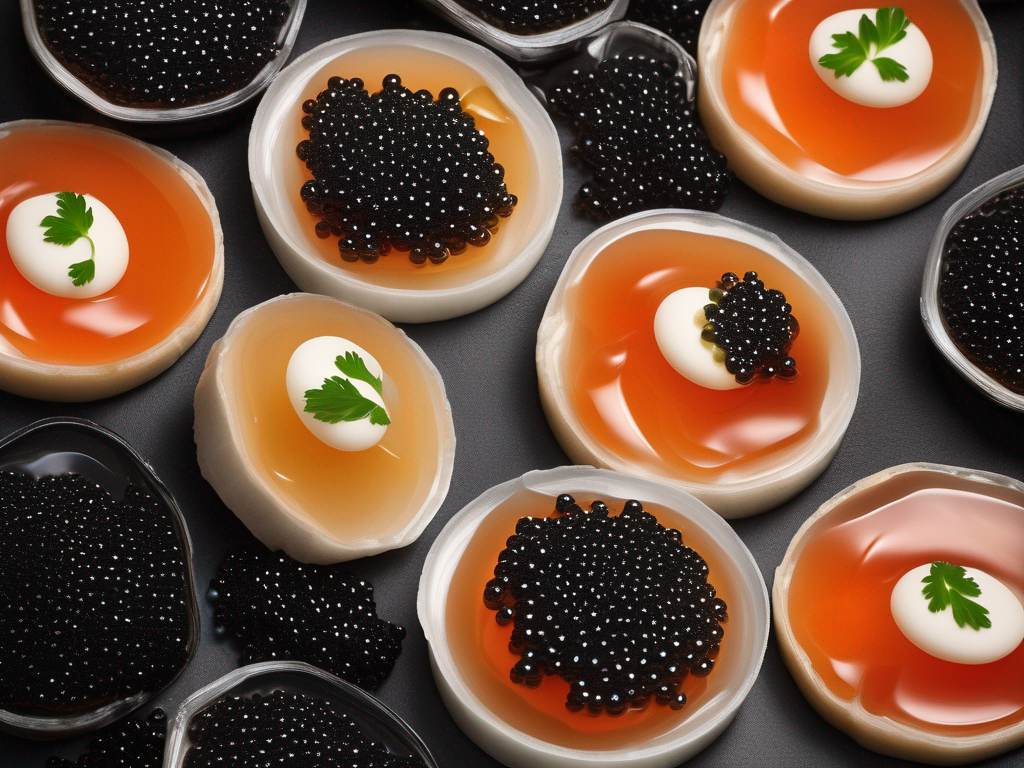
Is Your Caviar Still Safe to Eat? How to Tell if Your Caviar has Gone Bad
Get Your Free Food Safety Cheat Sheet
30 most common foods with instant answers. Print it and stick it on your fridge—completely free!
Is Your Caviar Still Safe to Eat? How to Tell if Your Caviar has Gone Bad
Caviar is a delicacy enjoyed by many for its unique taste and luxurious texture. Whether you're indulging in Beluga, Osetra, or Sevruga caviar, it's essential to ensure that your prized roe is fresh and safe to eat. Like any perishable food item, caviar can spoil if not stored properly or kept for too long. In this blog post, we will discuss how to determine if your caviar has gone bad and provide you with essential tips for safe consumption. (Caviar)
Signs that Your Caviar has Gone Bad
When it comes to caviar, freshness is key. Here are some indicators that your caviar may have spoiled:
1. Foul Smell
- Fresh caviar should have a clean, briny aroma reminiscent of the sea.
- Spoiled caviar may emit a strong, fishy odor that is off-putting and unpleasant.
2. Unusual Texture
- Good caviar should have firm, plump beads that burst in your mouth.
- Bad caviar may feel mushy, slimy, or have a grainy texture, indicating deterioration.
3. Off-putting Appearance
- Fresh caviar typically has shiny, glistening beads that range in color from light to dark.
- Expired caviar may appear dull, discolored, or have a cloudy appearance, signaling spoilage.
4. Sour Taste
- High-quality caviar should have a clean, salty taste that is characteristic of premium roe.
- Rancid caviar may taste sour, bitter, or metallic, indicating that it has turned.
Proper Storage of Caviar
To prolong the shelf life of your caviar and maintain its quality, it is crucial to store it correctly. Here are some tips for storing caviar safely:
1. Keep it Cold
- Store caviar in the coldest part of your refrigerator, preferably in the back of the fridge where the temperature is most consistent.
- Use a chilled serving dish or a bowl of ice to keep the caviar cold during gatherings.
2. Use a Sealed Container
- Transfer caviar to an airtight container or tin to prevent exposure to air, which can cause oxidation and spoilage.
- Avoid storing caviar in its original packaging once opened, as it may not provide a secure seal.
3. Avoid Freezing
- While caviar can technically be frozen, the texture and flavor may be compromised.
- If you must freeze caviar, do so in a vacuum-sealed bag and consume it within a few weeks for the best quality.
4. Check the Expiry Date
- Always check the expiration date on the packaging and consume caviar before it expires.
- If you have purchased fresh caviar from a reputable source, inquire about the best-by date for guidance.
Tips for Safe Consumption
Enjoying caviar is a luxurious experience, but it's essential to practice food safety to prevent any adverse effects. Here are some tips for safe consumption of caviar:
1. Serve Immediately
- Once you have opened a tin of caviar, it is best to consume it within a few days to enjoy it at its peak freshness.
- Do not let caviar sit at room temperature for an extended period; always serve it chilled.
2. Use Clean Utensils
- When serving caviar, use clean utensils such as a mother-of-pearl spoon or non-metallic utensil to prevent any metallic taste.
- Avoid using silverware or metal spoons, as they can alter the flavor of the caviar.
3. Pair with Complementary Foods
- Enhance the flavor of caviar by serving it with traditional accompaniments such as blinis, crème fraîche, chopped onions, or boiled eggs.
- Experiment with different pairings to find the perfect combination that suits your palate.
4. Consume Responsibly
- Enjoy caviar in moderation, as it is a highly sought-after delicacy that should be savored.
- Consider the sustainability of the caviar you are consuming and choose ethically sourced options whenever possible.
Conclusion
In conclusion, caviar is a prized delicacy that should be enjoyed with care and attention to quality. By being aware of the signs of spoilage, storing caviar properly, and following safe consumption practices, you can savor every precious bite of this luxurious treat. Remember to trust your senses when assessing the freshness of caviar, and always prioritize food safety when indulging in this gourmet delight.
For more information on caviar and other gourmet foods, visit our caviar page. Thank you for reading, and may your caviar experiences always be delightful and delectable. (Caviar)
Authoritative Food Safety References
These agencies and university labs inform every tip and health precaution we publish.
USDA FoodKeeper – Cold Storage Guidelines
Official refrigerator, freezer, and pantry timelines maintained by the U.S. Department of Agriculture.
Visit USDA FoodKeeperFDA Produce Safety Rule & Grower Guidance
Field-to-fridge handling practices that prevent contamination of fruits, vegetables, and leafy greens.
Visit FDA Produce SafetyCDC Foodborne Illness Prevention Hub
Surveillance-backed guidance on pathogens, symptoms, and steps to reduce foodborne illness risk.
Visit CDC Food SafetyUC Davis Postharvest Technology Center
University research detailing optimal storage atmospheres for produce after harvest.
Visit UC Davis PostharvestPenn State Extension – Home Food Preservation & Safety
Peer-reviewed extension bulletins on safe canning, chilling, and reheating practices.
Visit Penn State ExtensionGet Your Free Food Safety Cheat Sheet
30 most common foods with instant answers. Print it and stick it on your fridge—completely free! Want more? Upgrade to the complete guide with 70+ foods.
Scan your food directly and get instant safety info using our AI-powered camera feature.